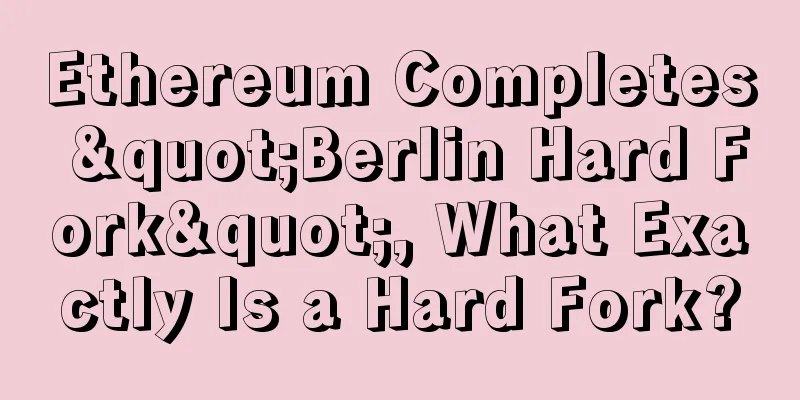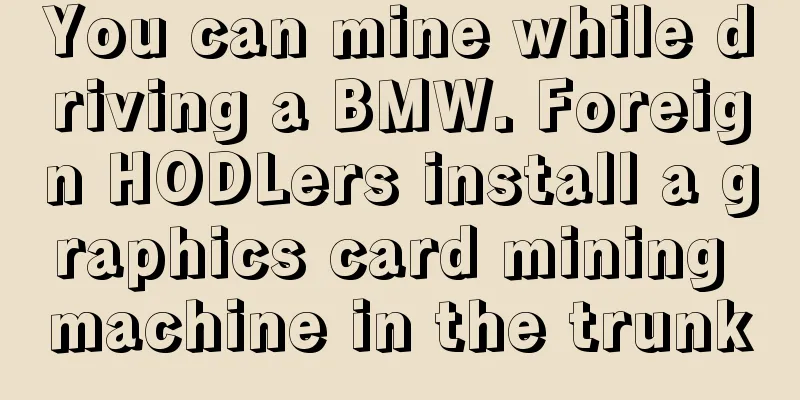Ethereum Completes "Berlin Hard Fork", What Exactly Is a Hard Fork?

|
Following the “Muir Glacier” upgrade, Ethereum once again implemented the “Berlin” upgrade. At about 6:12 pm on April 15 (Thursday), the Berlin hard fork was officially activated on the mainnet at block 12244000. In the past week, the average computing power of the Ethereum network was 502.37 TH/s, and the average block time was 13 seconds. Currently, 74.6% of the clients are ready. The Berlin hard fork mainly optimizes the performance of Ethereum's main network and contracts, including gas efficiency, updates to the way the Ethereum Virtual Machine (EVM) reads code, and prevention of denial of service (DDOS) attacks. This upgrade will include four new EIP improvement proposals:
What is a hard fork? The "Muir Glacier" upgrade was just carried out in January, and the "Berlin" upgrade has begun again. What exactly are upgrades and hard forks? Any system needs to be "upgraded", and the blockchain is no exception. In a centralized system, it is very simple to upgrade the software. You only need to upload the latest software to the development team and the users can download it. However, in a blockchain system, "upgrade" is not that simple. Because there is no centralized organization, every code upgrade of digital assets such as Bitcoin needs to be unanimously recognized by the community. If the community cannot reach a consensus, the blockchain is likely to form a "fork". A fork is a permanent divergence in the blockchain. After the new consensus rules are released, non-upgraded nodes refuse to verify blocks produced by upgraded nodes. Although upgraded nodes can verify blocks produced by non-upgraded nodes, they will also act according to the new rules. Therefore, if everyone continues the chain they think is correct, there will be two chains. The first fork of Ethereum was actually a solution to a hacker attack. In 2016, hackers used a code vulnerability to attack the crowdfunding project on Ethereum, The DAO, and continuously separated assets from The DAO's funding pool. In order to prevent investors' assets from being transferred, Ethereum directly chose a hard fork. After the fork, two chains were formed, one is the original chain (Ethereum Classic, ETC), and the other is the new forked chain (ETH), each representing a different community consensus and values. Iterative upgrades and continuous improvement Although the first hard fork was a last resort, Ethereum has been "long-planned" for subsequent hard forks. Rather than waiting for others to attack, it is better to take the initiative to fix the shortcomings. Since 2016, Ethereum has upgraded the entire system through hard forks many times. In 2019, the two upgrades called "Constantinople" and "Saint Petersburg" were both implemented in the form of "hard forks". In December 2020, Ethereum underwent the Istanbul hard fork upgrade. Less than a month later, Ethereum underwent the "Muir upgrade"? With such a short interval, what exactly is the purpose of the upgrade? The root cause is that the Ethereum difficulty bomb has been activated. The "Ethereum difficulty bomb" refers to a part of the difficulty adjustment mechanism of the proof-of-work algorithm used by Ethereum. The original intention is to stabilize the network's block time by adjusting the mining difficulty of mining new blocks. If the block time is too short (shorter than 10 seconds) or too long (longer than 20 seconds), the mechanism will increase or decrease the mining difficulty accordingly. The difficulty bomb adds a value to the mining difficulty that only increases with the block height and does not change with the block time. This value increases once every 100,000 blocks and never decreases. At the beginning, the difficulty bomb increases the difficulty by a small amount, so it has no obvious effect on the block time; and the increase in this part of the difficulty is also very slow, but its growth is close to exponential growth. So at a certain time, it will suddenly increase the difficulty of the network and reduce the block speed. In 2019, the difficulty bomb began to show its impact when the block height reached 8.6 million, and the average block time increased significantly; at the block height of 8.9 million, the block time increased to 14.3 seconds. "By February 2020, block times could rise to 30 seconds. This would make the entire chain slow and difficult to use." This is the so-called "Ice Age." One way to solve the ice age problem is to hard fork. Let’s take a look at the changes in Ethereum mining difficulty in recent years. The graph shows that there were two times when the difficulty showed an obvious exponential growth and then fell sharply. This is because the difficulty bomb exploded after the Ethereum difficulty bomb was activated, which reduced the difficulty of mining blocks again. All of this was completed with the hard fork. A separate hard fork upgrade was conducted to postpone the difficulty bomb, which is where the "Muir Glacier" hard fork came from. Muir Glacier can delay the "difficulty bomb" by 4 million blocks. As time goes by, the difficulty bomb is not expected to "explode" again in the next few years. The upgrade is named "Muir Glacier" to commemorate geologist Muir, who was the first scholar to accurately propose the concept of glacial activity. In any case, each hard fork upgrade represents an optimization and improvement of Ethereum. It is said that the "Berlin Upgrade" will trigger major changes in the functions of the Ethereum network. What do you think about this? Welcome to share with us in the comment section. |
<<: Did you get the 5 key points of the Chia Network white paper?
>>: Bitcoin miners acquire New York power plant to quadruple mining power
Recommend
Let you know what kind of people are lazy and don't want to work, they just love to eat
In life, we often meet some very lazy people who ...
OverStock invests $4 million to support Bitt’s digital currency payments business
Caribbean-based digital currency exchange Biitt h...
KFC launches Bitcoin package bucket, which may be popularized globally in the future
Zhongguancun Online News : Blockchain technology ...
iEx.ec, a distributed cloud computing platform, hopes to use blockchain to reuse idle computing power and thermal energy
IEXEC BLOCKCHAIN TECH, a French blockchain inno...
Litecoin is about to be halved. You must remember these points
Miners, investors, developers and other parties s...
How to tell marriage from a woman's face
Marriage is a major event in a woman’s life; so i...
What to do if you have a scar on your nose? It is difficult to make money.
A person's appearance is his face, and everyo...
Which type of eyebrows is the most blessed?
Woman with shaggy eyebrows S-shaped eyebrows mean...
Let the data speak for itself: Sun Yuchen's TRON deserves attention
Article source: Pit Hound Original link: https://...
More than 600 institutions and pension funds are rushing into the market
Institutional entry More than 600 companies have ...
India is experiencing a blockchain craze. Following the central bank’s white paper, another bank announced the use of blockchain for cross-border remittances
As reported not long ago, the Reserve Bank of Ind...
Suspicious people always look suspicious and uneasy.
When employing people, we often say that if you d...
Is everything alright for Ethereum after “The Merge”?
According to the latest data from the official Et...
What kind of people are most likely to get cancer?
Being sick is undoubtedly a very uncomfortable th...
Survive and thrive in the cryptocurrency market through creative destruction. The sector will thrive
As investors who came up through the ranks in the...









